Photo Essay: The Grandfather Greenhouse Gardens of Paris
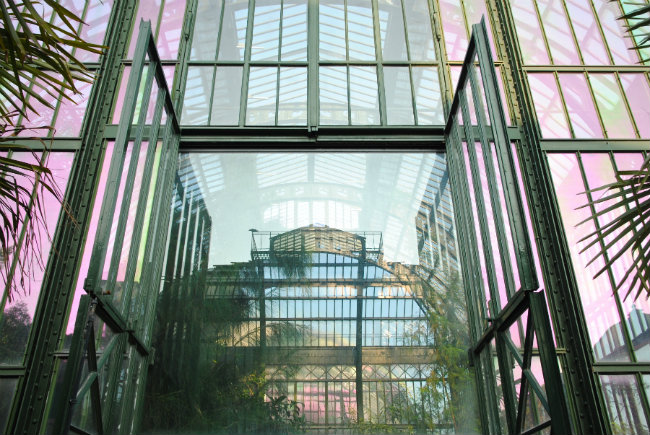
- SUBSCRIBE
- ALREADY SUBSCRIBED?
BECOME A BONJOUR PARIS MEMBER
Gain full access to our collection of over 5,000 articles and bring the City of Light into your life. Just 80 USD per year.
Find out why you should become a member here.
Sign in
Fill in your credentials below.
Question: Which French king had the bright idea of creating a structure to protect a highly-prized coffee plant?
The Sun King, of course! According to a French professor of botany, this plant—the rarest of gourmet commodities at that time—had actually been looted from the vanquished Dutch as a treasure of war, and King Louis XIV wished to protect his new royal supply. Thus in 1714 the first greenhouse in France was opened in Paris’s Jardin des Plantes.
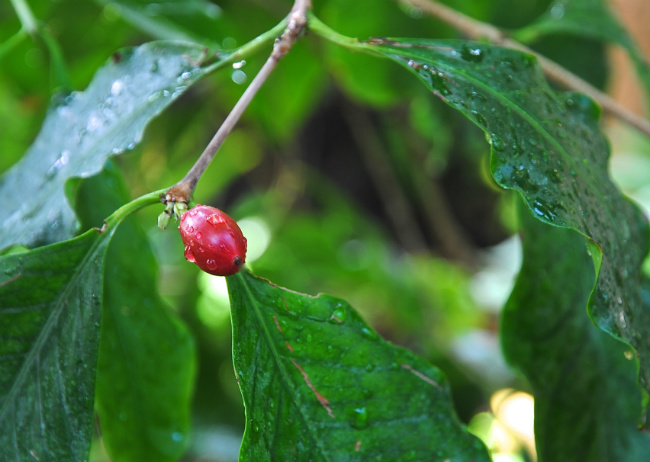
A much-heralded coffee bean’s youngest generation. (Jardin des Plantes) © Pamela Spurdon
Next question: How many public greenhouses do you think there are in Paris today?
More than you might guess. In addition to the ones at the Jardin des Plantes, the other “grandfather” greenhouses of this story are to be found on the southern edge of the Bois de Boulogne in the ancient village of Auteuil, next to the Roland Garros Tennis Stadium.
Other greenhouses exist—one in the Luxembourg Gardens (only open to the public on the “Journées du Patrimoine” weekend in September), one in the André Citroen Park and a small one in the Edouard Vaillant Square—but their size and beauty cannot compare to the two regal “grandfather” greenhouse gardens in the Jardin des Plantes and Auteuil.

Liver-shaped leaves of the first terrestrial plants (Hepaticopsida class). © Pamela Spurdon
The Historic Greenhouses in the Jardin des Plantes
The first of the two elegant greenhouse complexes of this story is a descendant of the wooden and glass building erected for Louis XIV. A century after this first French greenhouse appeared, the French architect Charles Rohaut de Fleury went to study the heated greenhouses in London’s Kew Gardens. On his return he designed the largest two steam-heated greenhouses of metal and glass in the world at that time. Both of these buildings—one finished in 1834 and the other two years later—still stand.
Today the earlier greenhouse is devoted to plants from the French territory of New Caledonia. Even now several large islands—such as Madagascar, New Zealand, and New Caledonia—remain homes to plants found nowhere else. One example is the diversity of New Caledonian indigenous ferns: of the 1,200 varieties of ferns in the world, 90% of them grow only there.
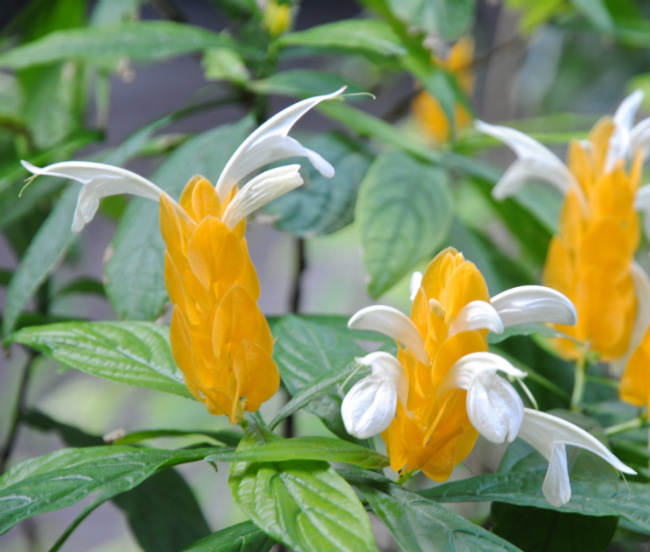
Playful flowers of a Pachystachys lutea or “lollipop” plant. © Pamela Spurdon
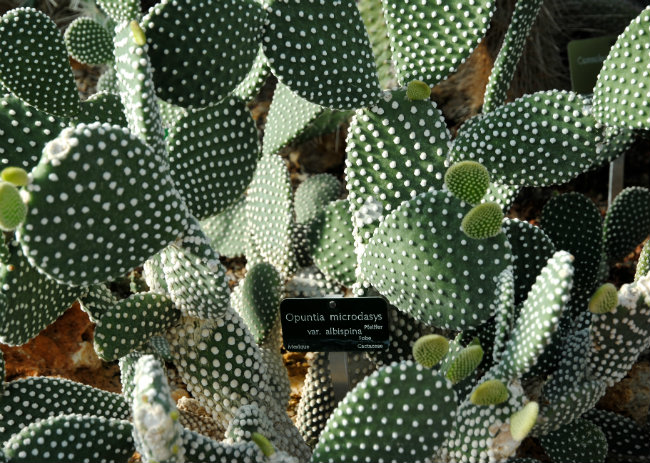
Dancing Mexican polka-dot cactuses from Mexico. © Pamela Spurdon
Inside the greenhouse erected in 1836, you can visually trace the fascinating evolution of plants from the smallest terrestrial, liver-shaped specimens dating back 430 million years ago to the oldest flowering flora: the pepper, avocado, and magnolia plants.
In the 1880s the first winter garden was opened, then replaced by another in the Art Déco style of the 1930s. The latter is the largest of the main greenhouse buildings on this site today, housing a magnificent collection of tropical flora, including the latest generation coffee bush.
A long, arid, bright bay showcases the impressive diversity of the cactus selection from the southwestern USA, presenting as well succulents from other desert regions from around the world.
Don’t look for the peyote plant, however, because each sample specimen has been stolen, and the last one is not going to be replaced!

Unfurling tendrils of the very ancient fern family. © Pamela Spurdon
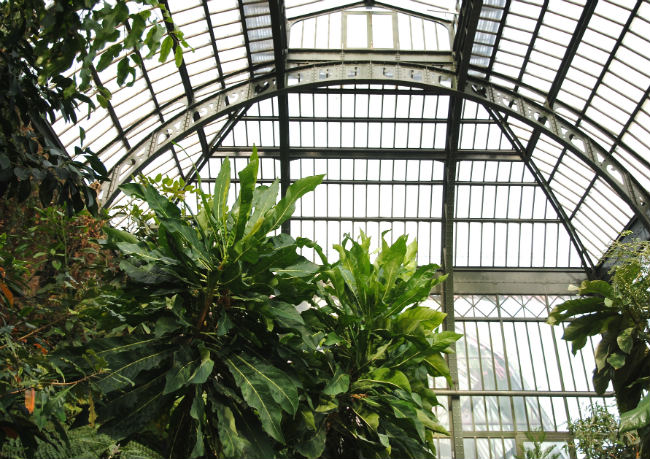
Rising Barringtonia neocaledonia under glass. © Pamela Spurdon
Auteuil “Cathedral” of Glass
In 1761 greenhouse gardens were built for Louis XV—the great-grandson of Louis XIV—in Auteuil, then on the outskirts of Paris. Unfortunately those buildings have since disappeared.
During the 19th century, exotic plants were increasingly sought after by botanists and the well-to-do, so cargos of them were delivered to Europe by steamship. To showcase these treasures, so-called “cathedrals” of glass were erected, with careful attention being paid to light, warmth, and moisture. One such “cathedral” was built in the Auteuil gardens in 1898 and is the central greenhouse there today, called the “Palmarium.”

The sun-kissed aviary of exotic birds (Auteuil). © Pamela Spurdon
The magnificent Palmarium houses tropical, subtropical, and equatorial plant families. Goldfish and large carp swim in pools included to release supplementary moisture for the surrounding flora. The large aviary is in fact a small replica of the Palmarium itself and home to a vividly-colored multitude of exotic, very chatty birds.
The two greenhouse wings to this main building encompass 12 long bays, called “chapels,” each one devoted to a particular botanical family: begonias, orchids, acanthus, and cactuses on the east side and ferns, bromeliads, and other tropical specimens from Africa and Latin America on the west.

Lush palms in the “cathedral” greenhouse (Auteuil). © Pamela Spurdon

The one-day-long blossom of the passion fruit plant. (Auteuil). © Pamela Spurdon
Outside the greenhouses, temperate-zone plants are presented to illustrate different gardening styles. In front of the main greenhouse you’ll find a traditional French “parterre,” with decorative vases and a fountain. A charming Japanese garden lies on one side, and on the other, an English and a geometric contemporary garden are laid out.
Nearly 3,000 plants representing 30 botanical families are on view in the Auteuil gardens—a live show changing every day! And don’t miss the whimsical Poets’s Garden next door, with its offering of verses of a botanical nature amid the flower beds.
However, all is not peaceful in this elegant garden of Eden. For the past five years, the integrity of the Auteuil greenhouse gardens has been and continues to be threatened by their hungry neighbor, the Roland Garros Tennis Stadium. Alleging that the expansion of the tennis stadium would enhance Paris’s candidacy for the 2024 Olympics, both Prime Minister Valls and Paris Mayor Hidalgo have come out in favor of this initiative still in litigation. (Here is the online petition regarding the Serres d’Auteuil.) Stop by the gardens on your way to the French Tennis Open to judge for yourself!

A chapel’s delicate wrought-iron mastery (Auteuil). © Pamela Spurdon

Curving stems of a Philodendron squamiferum or “fiddle leaf philly” (Auteuil). © Pamela Spurdon
Visitors Information
Grandes Serres du Jardin des Plantes
Open every day from 10 a.m. – 6 p.m. but closed on Tuesday. Entrance: 7 euros
Website: www.jardindesplantes.net/fr/visitez/jardins/grandes-serres-jardin-plantes
Serres d’Auteuil
Open weekdays 8 a.m. – 7:30 p.m. and weekends 9 a.m. – 7:30 p.m. Entrance: free
Website: equipement.paris.fr/jardin-des-serres-d-auteuil

The amazing Acalypha hispida or “red-hot cat’s tail”. (Auteuil). © Pamela Spurdon
Lead photo credit : Layers of reflections… (Jardin des Plantes greenhouses). © Pamela Spurdon


